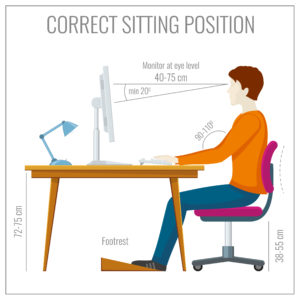Visual Hygiene Tips
A Parent’s Guide to Raising Children With Healthy Vision provides many different ways to help arrest the development of myopia and treat it with clinical solutions. Here are a few basic tips you can do today (and every day!) to promote proper visual hygiene.
Hold Reading Material at Least 14 Inches Away
The closer a child holds a book, the harder the eyes have to focus to maintain a clear image. Encourage your child to keep reading material, the computer monitor, handheld games, or any near work at least fourteen inches away. If your child continues to move his head closer and closer to the material, this may be a sign of a vision problem. There are many vision issues that would cause a child to move a book closer to his eyes. If you notice this behavior with your child, we’d encourage you and your child to visit an eye doctor who emphasizes a behavioral approach to eye examinations. The College of Optometrists in Vision Development certifies professional competency in this approach. You can visit www.COVD.org for more information and to find an eye doctor in your area.
Rest Every 30 Minutes
If a child reads a book, works on a computer, or plays video games for hours at a time, it can potentially cause vision problems. We encourage children to stop a near task every 30 minutes. Get up and move! Having children break from the near activity and walk around gives vision a break, too. I know, this is easier said than done. Children can be so engrossed in reading, playing a video game, or working on the computer that it can take considerable effort to even get their attention. We recommend setting a timer to act as an alarm. If it’s in the same room as the child but on the other side, the simple task of checking how much time remains will get them to change to a distance focus.
Use Good Posture While Reading
We feel proper posture is critical to maintaining good vision. Proper posture allows our children to maintain an appropriate distance from their reading material. This element of posture can sometimes be overlooked, but we feel it’s very important. When we examine children who have very different prescriptions between their two eyes, we’ll often discover that they’ve developed a habit of reading or writing with their head tilted. While it’s hard to say if the head tilt occurs because of the difference in the two eyes, or the head tilt caused the difference in prescriptions, it’s wise to have your child practice good posture and proper reading distance.
 Here are some tips to avoid eye strain:
Here are some tips to avoid eye strain:
- Make sure both feet touch the floor. If your child’s feet can’t reach the floor, have him sit in a smaller chair or place something beneath his feet.
- The reading material should be tilted back at a 20-degree angle.
- Watch for rolled shoulders! Make sure the child is sitting upright in the chair.
- Place reading material directly in front, not off to the side. This is especially important when viewing a computer monitor.
- Ask that your child not read in bed. This is because the distance from the material to the eyes isn’t controlled. When children read in bed, their posture may be distorted.
- For the same reasons mentioned above, make sure your child does not tilt his head or rest it on the desk when he reads or does near work. If your child continues to tilt his head when he is reading, even if you’ve corrected him many times, schedule a visit with the eye doctor.
- Light the space. We recommend an adjustable 60-watt incandescent lamp and avoid any source of glare on the reading material.